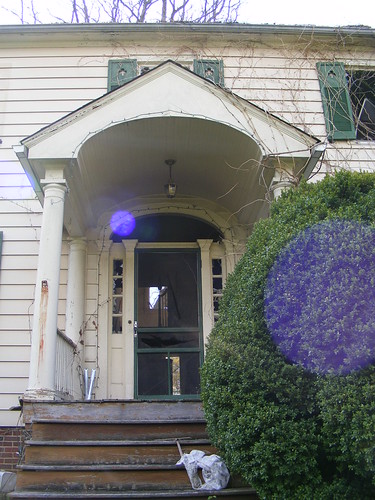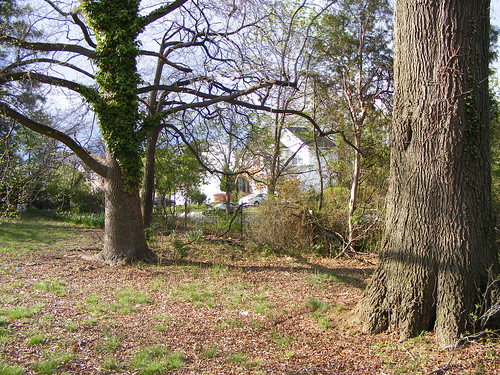

- Last week, the Planning Board approved a pre-preliminary plan (warning! PDF file.) for a development on Old Columbia Pike that would displace a historic house. By using TDRs (Transfer of Development Rights) to increase the allowable density, local builder Jamaal Homes (who don't really have a website) proposes building ten homes on the two-acre site across the street from the Tech Road Park-and-Ride.
The land is home to an abandoned (and rather spooky) house, built by the Conley family in 1928. While they sold the house four years ago, the family still occupies an older, grander residence less than a block away that's officially listed as the Conley House in the Fairland Master Plan (warning! PDF file.) That house, which was built in 1903 and is not historically designated, was the centerpiece of a farm called "Green Ridge," only a few acres of which remain today.
Home sites in the yet-unnamed subdivision will average a tenth of an acre, though they likely could've been bigger if the plan didn't require a new street dubbed Conley Court. The adjacent Willows Run Homeowners Association refuses to grant access to a 30'-wide strip of land they own between the proposed development and the adjacent Carters Grove Drive, a public street.
 Looking through a stand of trees to Carters Grove Drive in Willows Run.
Looking through a stand of trees to Carters Grove Drive in Willows Run.Can't help but say I like the Conley House (both of them), as they tell a story about East County's rural past that's rapidly disappearing. Other historic local buildings include the Fairland School (now the Fairland Center), built in 1895 as a tiny schoolhouse but no longer recognizable as it once was, and the houses on either side of Columbia Pike at Fairland Road, which dated to the early twentieth century and were demolished either for construction of the ICC.
But more disappointing than the loss of the Conley House are more subdivisions that don't connect to each other. I can't imagine that ten additional houses on a through-street would put that much of a strain on Willows Run, though an additional cul-de-sac on Old Columbia Pike could have an effect on traffic. Not to mention, of course, the potential for neighborhood-building you get when subdivisions are able to connect to each other. We can't follow Virginia's lead on cul-de-sacs fast enough.

2 comments:
Use of TDRs will allow the developer to add more density than would otherwise be allowed by the zoning law. Why do you think the Willow Run homeowners should allow the developer to use their property to add even more density? I can see how this would allow the developer to make more money, but I don't see any benefit to the existing neighboring homeowners of adding more density and traffic.
TDRs benefit the people who sell them and the developers who get additional density elsewhere. Arguably they benefit the population as a whole by preserving rural areas. But they definitely do not benefit the residents of the areas receiving the TDRs, who expected one density and get a higher density. Surely there is a better way to preserve rural areas than doing so at the expense of one group of homeowners.
If the general population benefits from preserving rural areas, then the general population should bear the costs, not just those who happen to live in the receiving areas. [And I don't live in a receiving area.]
Something really does have to be done about cul-de-sacs. They force traffic onto arterials whether or not the traffic is local, adding to congestion and gridlock.
Post a Comment